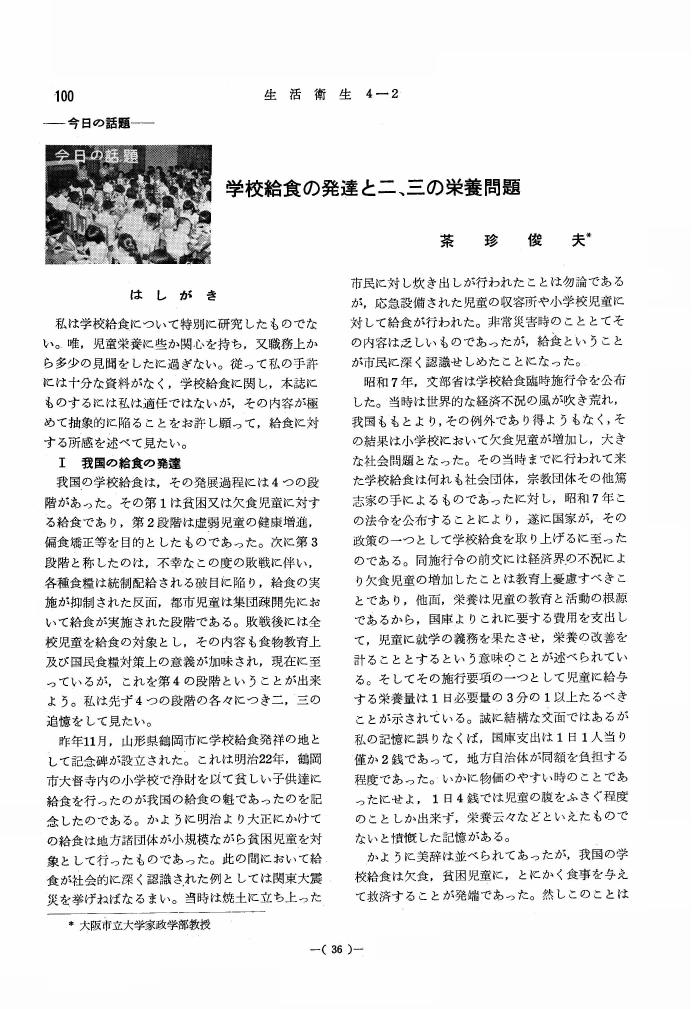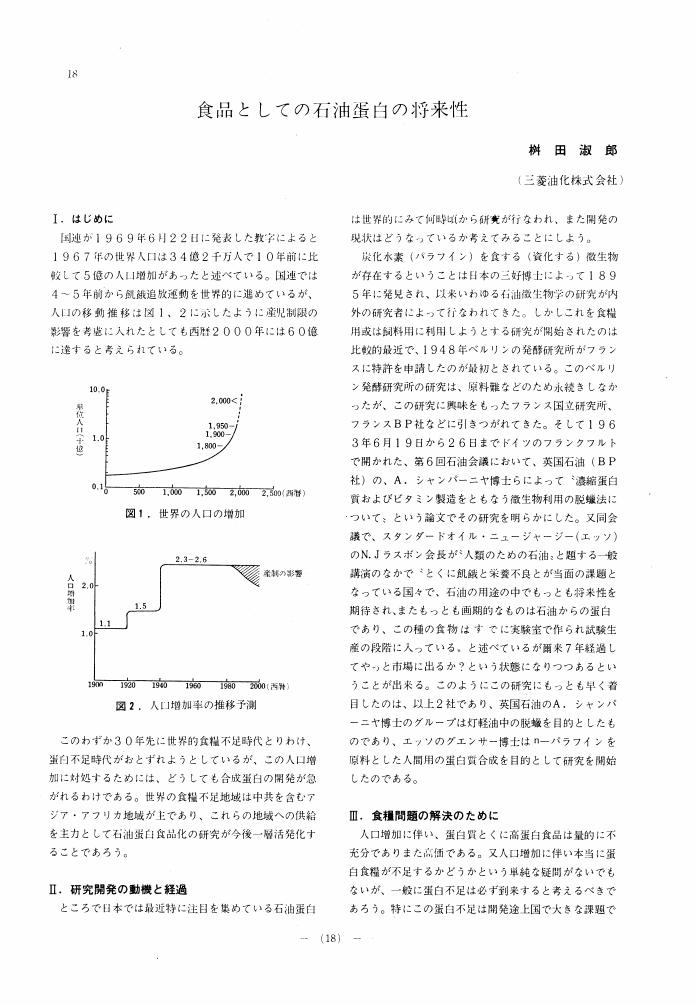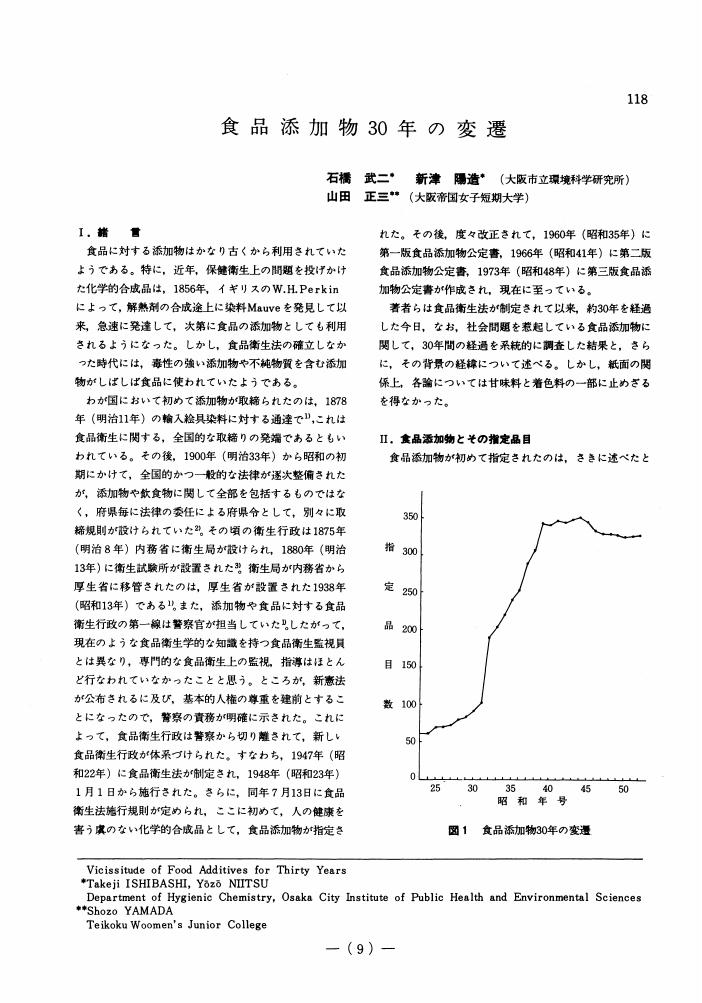43 0 0 0 OA 感染症の病毒性に関する進化生態学とその制御
- 著者
- 高倉 耕一
- 出版者
- Osaka Urban Living and Health Association
- 雑誌
- 生活衛生 (ISSN:05824176)
- 巻号頁・発行日
- vol.53, no.3, pp.145-152, 2009-07-30 (Released:2009-08-07)
- 参考文献数
- 17
Recently, there have been fears that an influenza pandemic is approaching in the near future and the importance of preventing infection has often been discussed. The possibility of controlling the evolution of virulence has however received less attention. In the present paper, I first introduce the evolutionary ecology of infectious disease virulence based on the existing theoretical work and then explain three possible selection pressures that favor very serious virulence and suggest promising methods to reduce the effect of each. Most of these methods are consistent with methods to prevent the spread of infection, while one also emphasizes the importance of international cooperation in the elimination of poverty and conflict. I suggest thus that evolutionary ecological thinking has the potential to provide a new point of view in the control of infectious diseases.
42 0 0 0 OA ツツジ科植物の成分グラヤノトキシンによる中毒の最近の話題
- 著者
- 福本 紘一
- 出版者
- Osaka Urban Living and Health Association
- 雑誌
- 生活衛生 (ISSN:05824176)
- 巻号頁・発行日
- vol.37, no.6, pp.237-247, 1993-11-10 (Released:2010-03-11)
- 参考文献数
- 33
38 0 0 0 OA 飲料及びそのモデル系での活性酸素生成とその抑制
- 著者
- 辻本 雄次
- 出版者
- Osaka Urban Living and Health Association
- 雑誌
- 生活衛生 (ISSN:05824176)
- 巻号頁・発行日
- vol.53, no.4, pp.211-225, 2009-10-30 (Released:2009-11-10)
- 参考文献数
- 48
In 2006, the Japanese Government announced that benzene might form in beverages to which had been added both benzoic acid (preservative) and L-ascorbic acid (antioxidant, fortifier). While the mechanism of benzene formation is not well understood, reactive oxygen species (ROS) are considered to participate. ROS are known to induce food deterioration such as lipid peroxidation and controlling their formation is a challenge for the food industry. The present review focuses on transition metal-assisted ROS formation and mitigation thereof in beverages and beverage model systems.Hydrogen peroxide has been detected in some beverage preparations and products, such as green tea, black tea, and coffee. Its formation is ascribed to prooxidant action by tea constituents (catechins) or added L-ascorbic acid. The prooxidation of these antioxidants is considered to involve transition metal catalysis.Transition metals such as iron and copper play an important role in ROS formation. In iron, oxidation of ferrous iron to a ferric state is probably the initiation step and produces superoxide. Many investigations on non-heme iron indicate that the oxidation is dependent on the sterically bulky character of the chelator (ligand) as well as the thermodynamic stability of the ferric chelate. This is typically exemplified by the chelators of EDTA and DTPA. The importance of the steric factor is also stressed in the oxidation of heme iron and in the reduction of ferric iron using superoxide to hydroxyl radical via the Harber-Weiss reaction. The discussions in the present review may be helpful for the development of new iron fortifiers for beverages that generate less ROS.
36 0 0 0 OA 四訂日本食品標準成分表の解説
- 著者
- 神戸 保
- 出版者
- (社)大阪生活衛生協会
- 雑誌
- 生活衛生 (ISSN:05824176)
- 巻号頁・発行日
- vol.27, no.6, pp.304-323, 1983-11-10 (Released:2010-03-11)
- 参考文献数
- 13
33 0 0 0 OA 病原ウイルスを分離・同定するということ
- 著者
- 久保 英幸
- 出版者
- Osaka Urban Living and Health Association
- 雑誌
- 生活衛生 (ISSN:05824176)
- 巻号頁・発行日
- vol.50, no.5, pp.381-386, 2006 (Released:2006-10-19)
- 参考文献数
- 12
There are many human infectious diseases derived from pathogenic viruses. In line with the infectious disease surveillance systems of Osaka City, the staff of our institute′s department of microbiology seek to isolate and identify human pathogenic viruses from patient specimens using a number of routine methods. In the present review, I describe methods of pathogenic virus identification using the standard virus neutralization test and the latest methods using virus genome gene analysis, together with Japanese law on infectious disease.
29 0 0 0 OA 生化学的に見たオゾンの毒性について
- 著者
- 深瀬 治
- 出版者
- 社団法人 大阪生活衛生協会
- 雑誌
- 生活衛生 (ISSN:05824176)
- 巻号頁・発行日
- vol.14, no.3, pp.58-61, 1970-06-20 (Released:2010-03-11)
- 参考文献数
- 33
28 0 0 0 OA 力二の肺吸虫寄生について
- 著者
- 松岡 貞男
- 出版者
- 社団法人 大阪生活衛生協会
- 雑誌
- 生活衛生 (ISSN:05824176)
- 巻号頁・発行日
- vol.6, no.1, pp.23-29, 1962-02-20 (Released:2010-10-28)
- 参考文献数
- 34
22 0 0 0 OA ある地区の「めしや」の栄養実態
- 著者
- 足利 千枝
- 出版者
- 社団法人 大阪生活衛生協会
- 雑誌
- 生活衛生 (ISSN:05824176)
- 巻号頁・発行日
- vol.8, no.3, pp.106-109, 1964-06-25 (Released:2010-10-28)
22 0 0 0 OA 串餅による食中毒患者について 特に行政的な考察
- 著者
- 山本 俊一 吉田 忠一 湯原 哲郎 中岡 季雄
- 出版者
- 社団法人 大阪生活衛生協会
- 雑誌
- 生活衛生 (ISSN:05824176)
- 巻号頁・発行日
- vol.7, no.2, pp.82-85, 1963-04-30 (Released:2010-10-28)
19 0 0 0 OA 植物を介した植食者間相互作用
- 著者
- 山崎 一夫
- 出版者
- Osaka Urban Living and Health Association
- 雑誌
- 生活衛生 (ISSN:05824176)
- 巻号頁・発行日
- vol.53, no.2, pp.79-89, 2009-04-30 (Released:2009-05-08)
- 参考文献数
- 52
The study of plant-mediated herbivore-herbivore interactions is a central theme in community ecology and has lately undergone great development. However, there are many unresolved patterns, the factors determining the patterns are unclear, and indirect effects that need to be taken into account for biodiversity conservation and pest management receive less attention. Focusing on these issues, the present study reviews five case studies of plant-mediated herbivore-herbivore interactions. In the first, leaf traits and gall-feeding insects are found to be important factors affecting the plant-species use of the Phyllocolpa sawfly, which induces leaf-roll galls on Salix plants. The second suggests that, since the gall-parasitic flea weevil Orchestes hustachei feeds obligately on leaf pouch galls induced by aphids on Zelkova serrata trees, and since the weevil may conceivably have evolved as a gall-feeder (cecidophage) from a leafminer, gall formation may have affected the evolution of feeding habits in this insect. The third proposes that, as bacterium galls on wisteria trunks are used by a wide array of arthropods, and as gall size correlates positively with the number of arthropod species and individuals, the plant-pathogenic bacterium increases arthropod diversity via gall induction. The fourth finds that, although the leafminer Ectoedemia sp. induces early leaf abscission in the evergreen oak in early spring and can then complete its development in the fallen leaves, the sika deer preying on the mined leaves on the ground results in considerable mortality for the leafminer. The fifth finds that, after the cicada Cryptotympana facialis emerges in the urban parks of Osaka, Japan, in midsummer, many flower chafers, ants, and wasps feed, possibly for intake of water and minerals, on the xylem sap exuding from the cicada feeding sites. These studies show that herbivores with different feeding habits - gallers, leafminers and sap-suckers - induce different trait changes in trees, resulting in different plant-mediated herbivore-herbivore interactions. Study thereof provides a range of pointers for pest management and biodiversity conservation.
17 0 0 0 OA プラズマクラスターイオンによる除菌作用の原理と応用
- 著者
- 中村 美咲 西川 和男
- 出版者
- Osaka Urban Living and Health Association
- 雑誌
- 生活衛生 (ISSN:05824176)
- 巻号頁・発行日
- vol.53, no.4, pp.239-246, 2009-10-30 (Released:2009-11-10)
- 参考文献数
- 3
- 被引用文献数
- 2
We have developed a discharge plasma air-cleaning technology known as PlasmaCluster IonR (PCI), which generates both positive and negative ions in the air. The present study was designed to determine the mechanism of the ions' effect on bacteria. We confirmed that PCI destroys the surface of airborne and attached bacteria. The present paper reports the principle of PCI and the results of examination of its bactericidal effect. We also show how the device produces cluster ions from a specially designed discharge electrode and investigate what types of ion are detected in mass-spectroscopy analysis.
- 著者
- 久保 英幸
- 出版者
- Osaka Urban Living and Health Association
- 雑誌
- 生活衛生 (ISSN:05824176)
- 巻号頁・発行日
- vol.54, no.3, pp.219-228, 2010-07-30 (Released:2010-08-10)
- 参考文献数
- 31
The occurrence of human-human infection with the new influenza A(H1N1) virus (AH1pdm) was reported for the first time in the United States in late April 2009. Sequentially, pandemic AH1pdm was reported worldwide. Laboratory examinations to detect AH1pdm genes in the specimens of patients with influenza-like illness (ILI) were performed with real-time RT-PCR and conventional RT-PCR at my institute in Osaka City. The first case of AH1pdm genes detection in an ILI patient specimen occurred on April 30, 2009. The number of ILI patient specimens examined increased in May 2009, and 37-120 specimens per month were examined from May to December 2009. In Osaka City, the pandemic of AH1pdm began in July 2009 and the pandemic peak was observed in November 2009. Thereafter, the number of ILI patients with AH1pdm infection decreased gradually and the pandemic of AH1pdm was close to exhausted in March 2010. As it is not possible to estimate the pandemic pattern of AH1pdm in the future, strict surveillance for AH1pdm must be performed with other seasonal influenza viruses.
15 0 0 0 OA 学校給食の発達と二、三の栄養問題
- 著者
- 茶珍 俊夫
- 出版者
- 社団法人 大阪生活衛生協会
- 雑誌
- 生活衛生 (ISSN:05824176)
- 巻号頁・発行日
- vol.4, no.2, pp.100-104, 1960-04-30 (Released:2010-03-11)
13 0 0 0 OA 食品としての石油蛋白の将来性
- 著者
- 桝田 淑郎
- 出版者
- 社団法人 大阪生活衛生協会
- 雑誌
- 生活衛生 (ISSN:05824176)
- 巻号頁・発行日
- vol.15, no.1, pp.18-23, 1971-02-20 (Released:2010-03-11)
12 0 0 0 OA カビ汚染とエアコン
- 著者
- 濱田 信夫 藤田 忠雄
- 出版者
- Osaka Urban Living and Health Association
- 雑誌
- 生活衛生 (ISSN:05824176)
- 巻号頁・発行日
- vol.45, no.2, pp.51-61, 2001-03-30 (Released:2010-03-11)
- 参考文献数
- 39
- 被引用文献数
- 2
12 0 0 0 OA 浴室のカビ汚染の現状とその対策
- 著者
- 濱田 信夫
- 出版者
- (社)大阪生活衛生協会
- 雑誌
- 生活衛生 (ISSN:05824176)
- 巻号頁・発行日
- vol.43, no.3, pp.89-96, 1999-05-30 (Released:2010-03-11)
- 参考文献数
- 18
Fungal and yeasty contamination in bathrooms was studied using the swabbing method. The average number of fungi was larger on the ceiling and upper parts of the wall than that of the floor and lower parts of the wall. In the upper parts of the bathroom, Cladosporium was the predominant fungi in both summer and winter, followed by Exophiala, Aureobasidium, Phoma and Acremonium. In the lower parts of the bathroom, Exophiala was predominant, and represented around 80% of all fungi. Rhodotorula was the predominant yeast in all parts of the bathroom. Cladosporium, more than Exophiala, Rhodotorula and others, seemed to affect the dirtiness of bathrooms. Additionally, the growth rate of each type of fungus on the walls of the bathroom were compared after cleaning. It was observed that the number of fungi after 2 months was less than half that of pre-cleaning.Ventilation was effective in reducing fungal and yeasty contamination. The effects of moisture on fungal contamination was more remarkable in the upper parts of the bathroom than in the lower parts, including the floor. The effects of cleaning were distinctly recognized on the floor, because the frequency of cleaning the floor is much higher than that of the upper parts of the bathroom.
9 0 0 0 OA 食品添加物30年の変遷
- 著者
- 石橋 武二 新津 陽造 山田 正三
- 出版者
- Osaka Urban Living and Health Association
- 雑誌
- 生活衛生 (ISSN:05824176)
- 巻号頁・発行日
- vol.21, no.4, pp.118-129, 1977-08-20 (Released:2010-03-11)
- 参考文献数
- 14
9 0 0 0 OA 近年日本におけるポリオ流行の疫学的考察
- 著者
- 平山 雄
- 出版者
- 社団法人 大阪生活衛生協会
- 雑誌
- 生活衛生 (ISSN:05824176)
- 巻号頁・発行日
- vol.5, no.5, pp.179-185, 1961-10-10 (Released:2010-03-11)
- 参考文献数
- 31
9 0 0 0 OA 大阪桃山病院ができたころ
- 著者
- 水原 完
- 出版者
- 社団法人 大阪生活衛生協会
- 雑誌
- 生活衛生 (ISSN:05824176)
- 巻号頁・発行日
- vol.29, no.6, pp.333-337, 1985-11-10 (Released:2010-03-11)
- 参考文献数
- 8
9 0 0 0 OA たこの食中毒と腸炎ビブリオ
- 著者
- 明橋 八郎
- 出版者
- 社団法人 大阪生活衛生協会
- 雑誌
- 生活衛生 (ISSN:05824176)
- 巻号頁・発行日
- vol.8, no.5, pp.177, 1964 (Released:2010-10-28)












